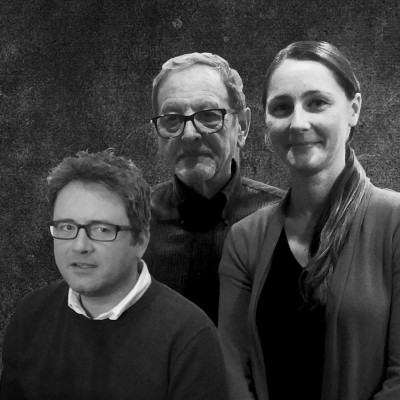5 key facts about this project
At its core, the project embodies a vision of functionality that caters to its intended use—whether it serves as a cultural hub, educational facility, or mixed-use development. The design approach is rooted in understanding the needs of its users, fostering spaces that promote interaction and accessibility. This is evident in the layout and circulation patterns, which facilitate movement through the site, allowing for seamless transitions between different areas and activities.
The materiality of the design plays a pivotal role in its expression and sustainability. A careful selection of materials is evident, including concrete for structural integrity, glass for transparency and illumination, and sustainably sourced wood to bring warmth and tactile quality to the interiors. The use of these materials not only enhances the aesthetic appeal but also supports environmental considerations, aligning with current trends in sustainable architecture. The project integrates green roofs and living walls that contribute to biodiversity while improving air quality, reflecting a commitment to ecological responsibility.
The architectural design features distinct elements that set it apart from conventional structures. The façade, for example, showcases innovative shading devices that control light while creating dynamic shadows that change throughout the day. This not only enhances the building's energy efficiency but also contributes to the visual landscape of the area. Additionally, outdoor spaces are thoughtfully incorporated, providing areas for relaxation and social interaction, which are vital for community building.
Unique design approaches emerge through the deliberate use of scale and proportion, allowing the project to engage meaningfully with its context. The building's height is designed to respect the surrounding skyline while offering panoramic views of the natural landscape. This sensitivity to scale, coupled with the integration of public art and landscape features, establishes the project as not just a building, but as a landmark that invites exploration and interaction.
The project emphasizes inclusivity, ensuring that spaces are accessible to all, with features catering to diverse groups and ages. This focus on user experience is central to the architectural philosophy driving the design, reflecting an understanding that architecture is not merely about aesthetics but also about enhancing the quality of life for its inhabitants.
The relationship between indoor and outdoor spaces is another key aspect of the design. Large, operable windows and sliding doors promote natural ventilation and create a strong connection to the exterior environment, inviting the landscape into the heart of the building. This fluidity between inside and out fosters a sense of well-being among users, enhancing their engagement with both the architecture and the natural world.
In summary, the project exemplifies contemporary architectural design principles through its thoughtful engagement with function, materiality, and the surrounding context. The careful crafting of spaces encourages interaction, promotes community, and strives for sustainable practices, making it a notable example of modern architecture. Readers interested in a deeper understanding of this project are encouraged to explore the architectural plans, sections, and design ideas to fully appreciate the vision and intent behind this innovative architectural endeavor.


 Miriam Estera Stern,
Miriam Estera Stern,  Ivan Gavril Stern,
Ivan Gavril Stern, 






















